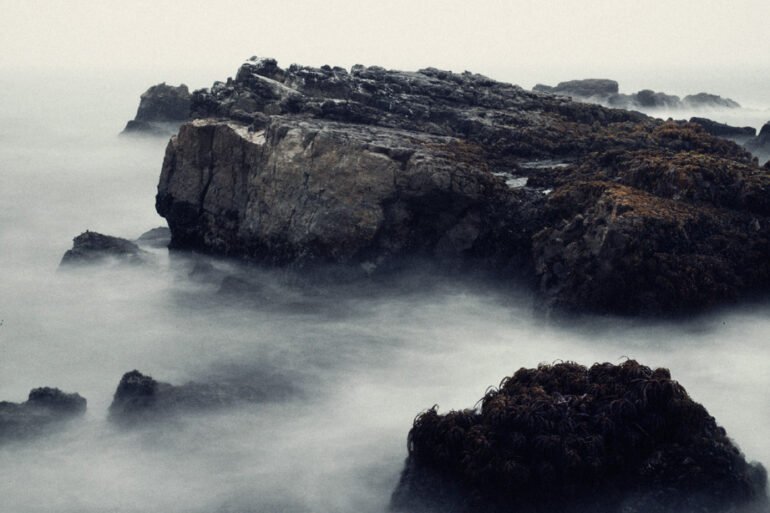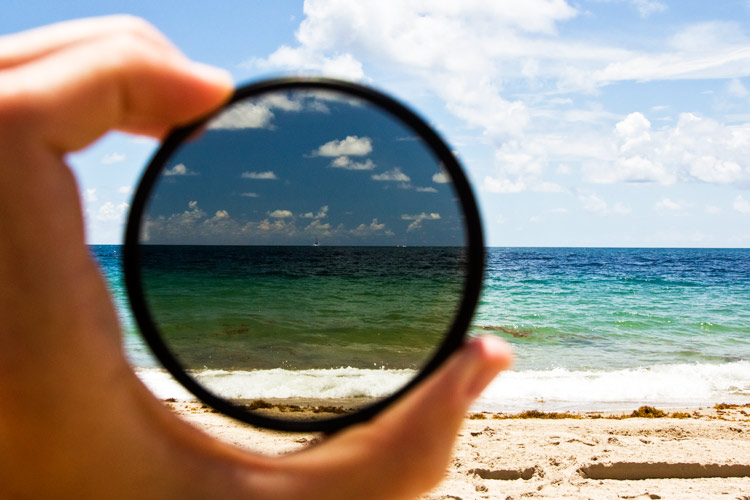We may earn a commission when you purchase through affiliate links. Learn more.
1. Tripod
For long exposure photography, a well made, sturdy tripod is probably the most crucial piece of gear, whether you plan to shoot during the day or night. When shooting long exposures, you want the moving scene elements to be softly blurred like clouds, water, car lights, or people. What you don’t want blurred are the parts of the scene that aren’t in motion — rocks, trees, people standing completely still.
Any camera shake during a long exposure can leave you with very blurry images. This shaking might be caused by any number of things — wind, nearby movement causing vibrations, or even flowing water if you’ve set up your tripod in a river to capture the water flowing past. A sturdy tripod will help keep your camera steady and motionless and will help reduce vibrations. The center column on many tripods includes a hook from which you can attach a weight to further reduce vibrations, especially on windy days and nights. For more tips, check out this tutorial on keeping your camera as steady as possible while using a tripod.
Like virtually every other piece of photography equipment, tripods can be found in a seemingly endless price range. Be sure to look at features like how much weight the tripod and head can support, how much the tripod weighs, how many leg sections the tripod has, etc.
In general, tripods with fewer leg sections will be sturdier than tripods with more leg sections. If you plan on shooting long exposures in the wilderness though and will be hiking long distances, more leg sections often mean a smaller folded size, so you’ll need to weigh the pros and cons of each tripod’s specs. Here’s our guide to some highly rated lightweight tripods.
2. Camera with Manual Exposure Control
Long exposure photography necessitates the use of a camera with manual exposure control. This means that you need to be able to adjust the three exposure variables — shutter speed, aperture, and ISO. Every DSLR camera and mirrorless camera offers this capability, and an increasing number of smaller advanced compact cameras do as well such as the Sony RX100 IV, Ricoh GR II, and Fujifilm X100T.
When shooting long exposures, particularly at night, you’ll find that larger sensors like those found on full frame cameras like the Canon 5Ds, Nikon D810, and Sony A7 II help to keep digital noise down, but even modern cameras with smaller crop-frame sensors can produce excellent results at high ISO speeds.

3. Neutral Density (ND) Filter
Made of semi-transparent glass or resin, Neutral Density filters block a certain amount of light depending upon their strength. Without a Neutral Density filter, you can still shoot many kinds of long exposure photography, but you’ll be limited to shooting when the ambient lighting is low enough that you don’t need the light blocking power of an ND filter. If you want to shoot exposures of more than just a second or two during the day, you’ll likely want to purchase an ND filter to explore the possibilities of long exposure photography.
ND filters can be purchased in a variety of strengths and sizes, designed to fit different lens filter threads and even square and rectangular filter holders. Low strength ND filters can be used to block just a stop or two of light, perfect for those times when you want to reduce the light’s intensity by a small amount. If you want to use a one minute long exposure to smooth the flow of a raging river, you’d need a strong Neutral Density filter like a 9 or 10 stop filter. Variable neutral density filters are convenient options and enable you to rotate the filter to change the amount of light that is blocked. Graduated Neutral Density filters darken just part of a scene — ideal for when situations such as when the sky is much brighter than the ground.
Because Neutral Density filters are relatively pricy, most photographers getting started with long exposure photography buy one that fits their lens with the largest filter thread. To use the ND filter on their other lenses, you can purchase a step up adapter ring so that you can attach a larger filter to a smaller lens, like this Sensei 58-77mm Step-Up Ring which would allow you to use a 77mm ND filter on a lens with a 58mm filter thread size.
4. Polarizing Filter
Polarizing filters can help to increase contrast and color saturation and can reduce reflections on water and glass. Polarizing filters can be useful when shooting long exposure photography, since they can help reduce undesired reflections and darken blue skies so that drifting clouds stand out better. Additionally, polarizing filters can block between 1 to 2 stops of light, making them useful for times when you don’t need the light blocking power of a stronger ND filter.
To obtain the benefits of both a polarizing filter and an ND filter, these filters can be stacked — for instance, when you want to shoot a long exposure image of a river without the surface reflecting the clouds overhead.
5. Additional Batteries
Shooting long exposure photography can drain camera batteries quickly. It’s always important to start your photography sessions with a full battery to prolong your shooting time and avoid a dead battery halfway through a ten minute long exposure.
If you’re planning on a full day or night of shooting long exposures, you’ll definitely want to bring additional charged camera batteries with you so that you can quickly swap batteries when you see the one you’re using getting low.
Some prefer to only use OEM (original equipment manufacturer) batteries, while others use aftermarket batteries made by third party manufacturers. Deciding between OEM and aftermarket camera batteries is a very personal choice — some photographers feel that the brand name batteries are more reliable, safer, and have better quality control. Those who buy aftermarket batteries often do so for the cost savings, which can be quite significant if buying multiple batteries.
A few of the generally well reviewed aftermarket battery brands include Wasabi Power and SterlingTek.
6. Remote Controls & Cable Releases
Most digital cameras don’t offer a preset exposure time of longer than 30 seconds, meaning if you want to capture exposures longer than this you’ll need to switch to the bulb setting which keeps your camera’s shutter open for as long as the shutter release button is held down. Physically holding the button down is a great way to introduce unwanted vibrations and camera shake into your long exposures, but a cable release provides a way to start an exposure and keep the shutter open without requiring you to touch the camera. If you’re sticking with exposures of 30 seconds or under and don’t have a cable release or remote, one option you can use is to set a 2 second self-timer on your camera so that by the time the exposure begins, any vibrations caused by pressing the shutter button have subsided.
Some cable releases are compatible with several camera models, but you’ll want to verify that your camera will work with the cable release you’re looking at.


